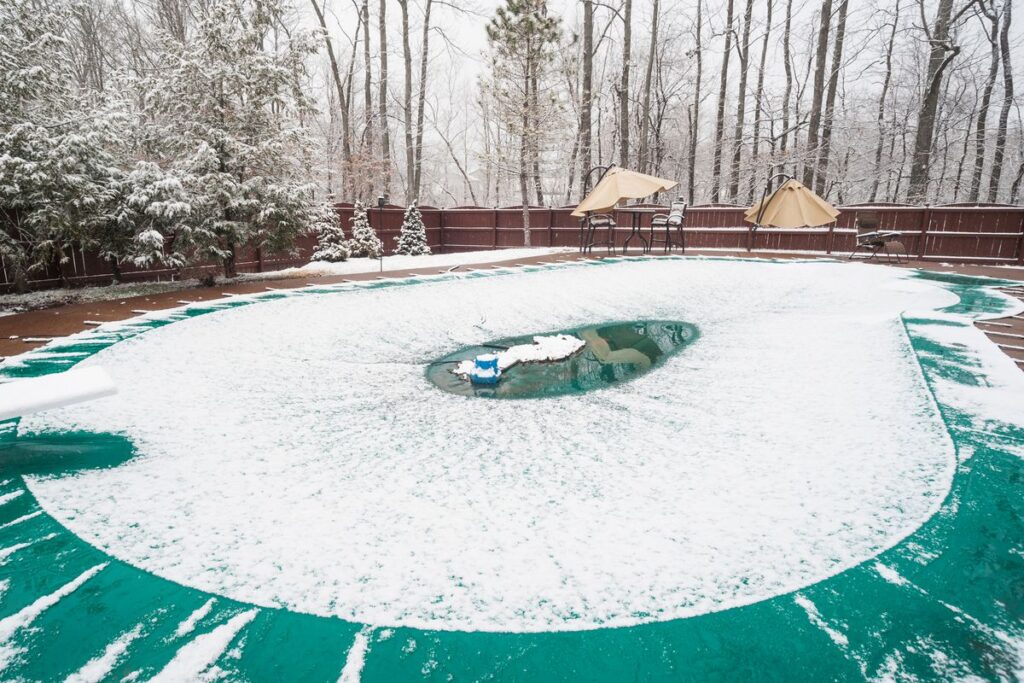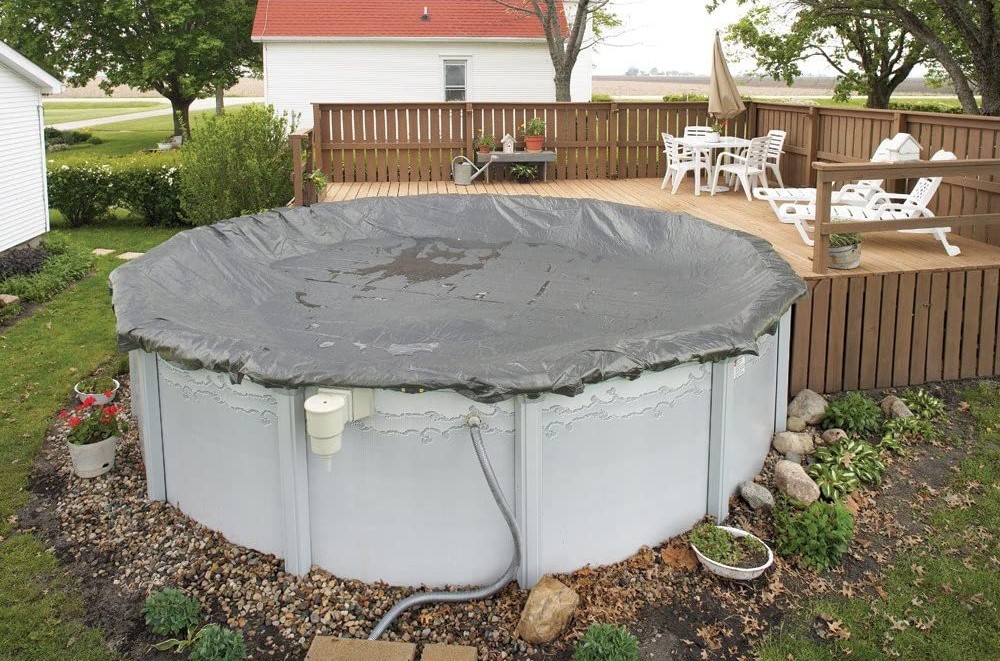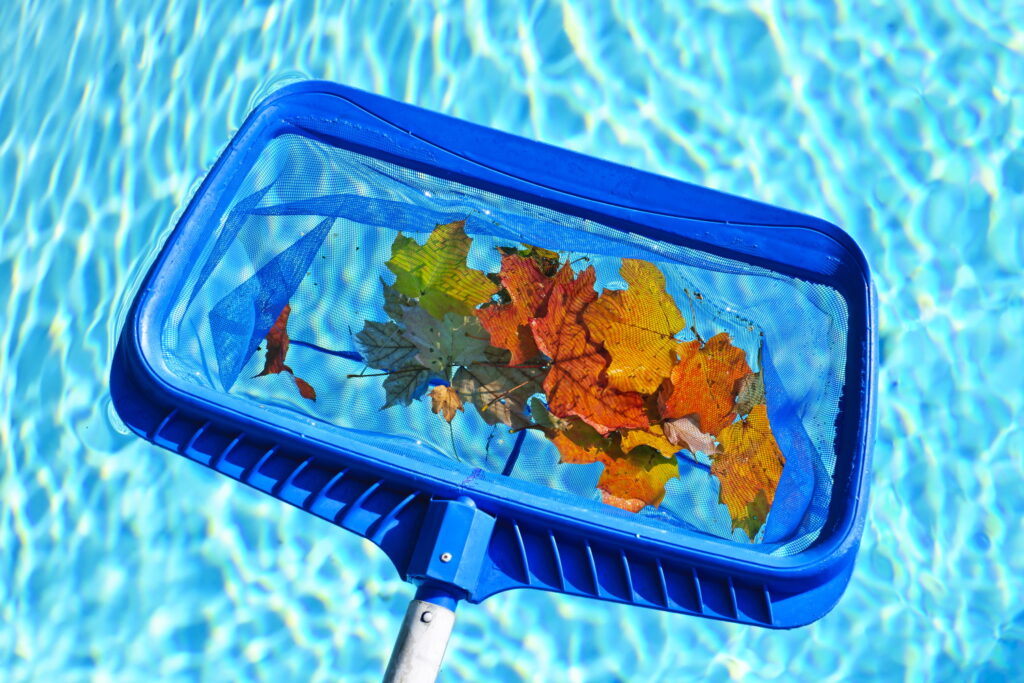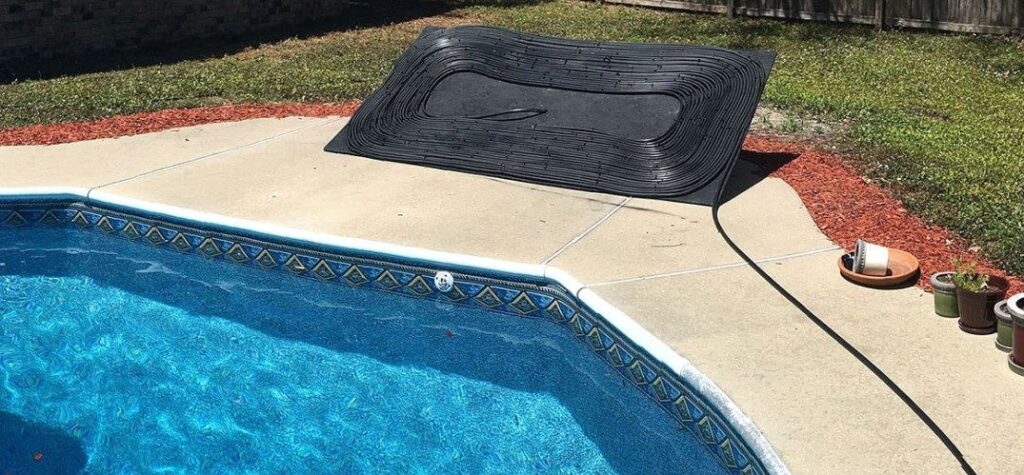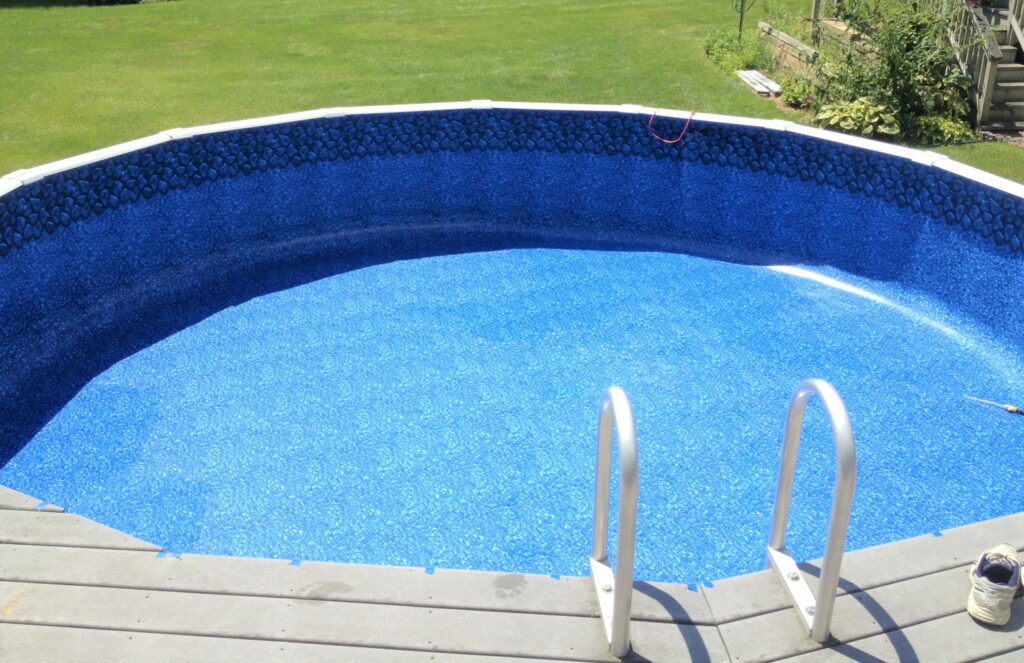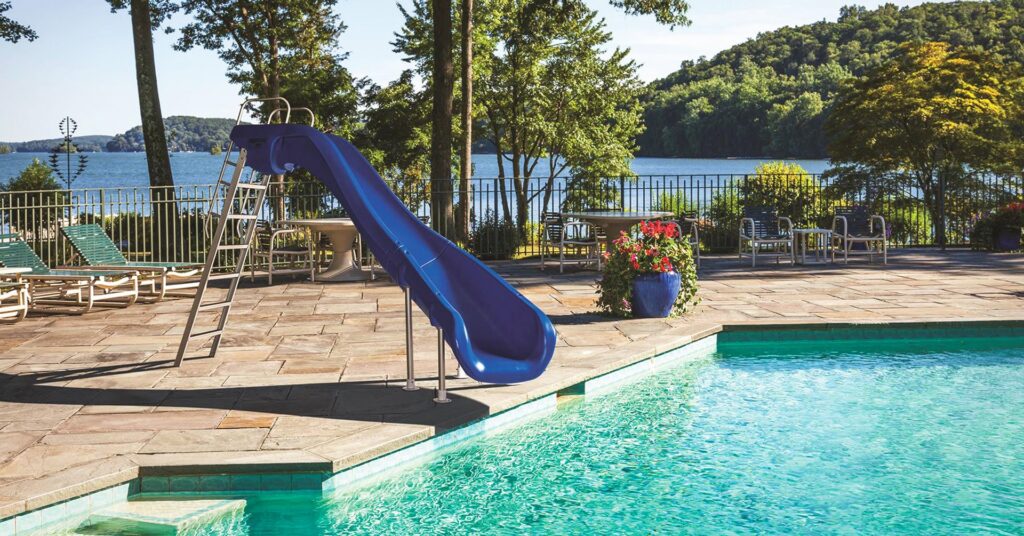When you have a pool, one of the things that you know is that it takes a lot of work to maintain it. You want to make sure that your pool’s chemical levels are correct and that it’s safe and healthy to swim in. That means making sure that the pool’s chemicals are doing their jobs correctly. You probably know all about chlorine. But what about cyanuric acid? That is a term you may be unfamiliar with, especially if you are a new pool owner.
To help you out we are going to look at how to lower cyanuric acid in pool. We are also going to look at cyanuric acid, what it does and why it’s important to keep it at the correct levels.
When your cyanuric acid is too high in the swimming pool, it often is because you’ve added an overabundance of stabilized chlorine. A lot of chlorine products have CYA in them as a stabilizer for chlorine. This will help with slowing down the loss of chlorine because of the UV rays of the sun. However, as chlorine starts breaking down, this CYA will stay behind in your pool water and gradually increase the levels of CYA as time passes.
Technically it’s safe for you to swim in a pool with a high level of cyanuric acid. But even though it’s safe to do so, there are other reasons why you want to keep the levels of cyanuric acid down. First of all, it can cause damage to the liner of your swimming pool. It also can cause false readings of your water chemistry. Finally, it can reduce the ability of chlorine to sanitize the water. Because of this, you might have problems with algae and cloudy water.
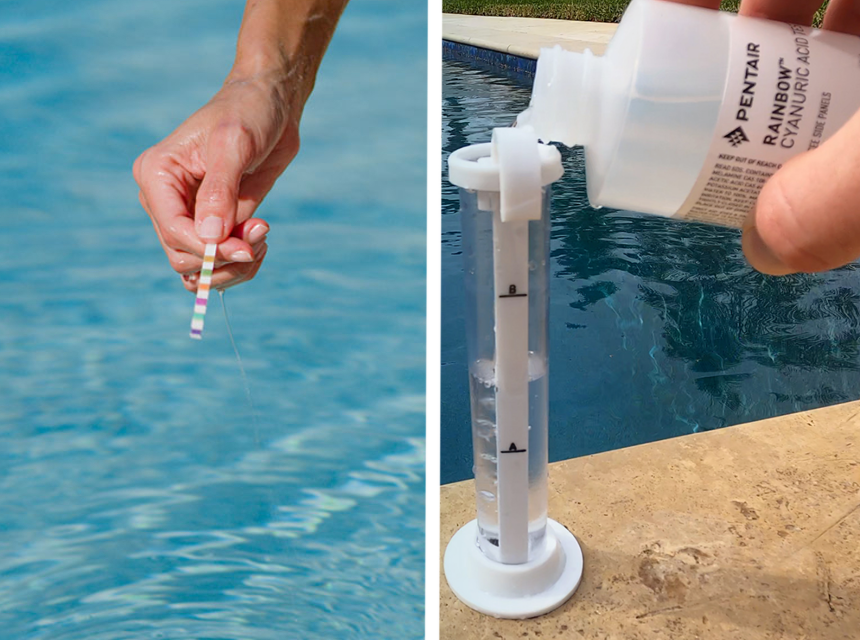
The right range for CYA is 30 to 50 PPM. When your CYA levels are too high, it can affect how effective your chlorine is. When you don’t have enough CYA, your chlorine will break down.
However, it’s the CYA ratio that’s most important. The levels of free chlorine should be 7.5% of the CYA levels. If your CYA levels are 40 PPM, the free chlorine levels should be 3 PPM. This will make sure that the water is properly sanitized. Generally, your pool’s levels of free chlorine should be 1 PPM to 3 PPM.
If you have very high CYA levels, you should take a sample of your pool water to the pool store. You also can purchase test kits that will measure the levels to as high as 300 PPM.
If your cyanuric acid levels are off the charts, take a water sample into your local pool supply store or use a test kit that measures CYA levels up to 300 ppm.
So, now you want to know how to lower high cyanuric acid in pool. Below we are going to look at a few ways that you can lower the high levels in your pool to make sure that everything is working correctly.
One of the easiest ways that you can reduce the levels of cyanuric acid is to dilute your water. We’re going to go over the steps for doing this below. But before you dilute the water in your pool, test the water using one of the best pool test kits or test strips. This is going to tell you the current level of CYA in the pool. If the levels are really high, it means that the reading could be too high for you to know. In this case, you want to take a sample of your water to the pool store.
Once you’ve drained out some of the water, refill your swimming pool with fresh water and retest your pool chemistry. Continue draining and refilling your water until you reduce cyanuric acid levels to the normal range between 30 and 50 ppm.
Begin to partially drain the pool with the filtration system’s waste setting, your hose siphon, or your submersible pump. When you’re using the filter, the valve should be set to either drain or waste. Remember that it’s possible that you only need to get rid of several inches of pool water. As you’re draining water, you want to make sure that the level doesn’t go below your skimmer. Otherwise, you are going to have your best pool pump running dry and this can cause a huge problem.
After there is some water drained from the pool, then you want to refill the pool using fresh water.
After you have put some fresh water in the pool, retest the chemistry of the pool. Continue this process until the levels of cyanuric acid are back to a normal range which is anywhere from 30 to 50 PPM.
What if your levels are high and you don’t want to drain your pool? Maybe there’s a drought or something and you’re worried about filling up your pool. Well, there are other things that you can do to reduce your CYA levels.
Although you are able to purchase CYA reducers, they are quite expensive. They also don’t always work all the time. Keep in mind that the best way you can reduce your CYA is to drain and refill the pool using fresh water. However, if you have discovered that the levels are really high and you’re unable to dilute the water, then using one of these CYA reducers might be the answer.
Remember that these reducers aren’t going to work if you have added phosphate treatments, algaecides, or clarifiers to the pool in the last seven days. The pool water also needs to be a minimum of 65°F. You also want to check the other pool chemical levels, such as total alkalinity and pH to make sure that they’re in the right range before you use the reducer.
If you aren’t able to dilute the pool water and your levels of CYA are chronically high, another thing that you want to consider is buying a filter to do reverse osmosis. The water in your pool goes through a semi-permeable membrane that is extremely fine. The water then moves through the tank, where activated charcoal filters it before it returns to the pool.
The thing about this system is that it will waste lots of water. You also are going to spend thousands of dollars to purchase this filter and have it installed. It also will create a lot of wasted water. When you are using this filter, you are going to create 2 wastewater gallons for each gallon passing through the filter.
However, a lot of pool owners have discovered that these filters are very helpful. The reason is that they don’t just reduce CYA. They also help with lowering the levels of dissolved solids and calcium hardness these systems are also recommended in those places where water restrictions and shortages are happening. Therefore, even though it’s going to waste some water, it’s going to save more water compared to draining and refilling the pool.
If you want to know how to lower cyanuric acid in the best above ground pool, you can either use the drain and refill method, the reverse osmosis method, or use one of the reducers. You want to make sure that you are keeping your CYA levels at the right level so that it doesn’t affect your pool liner.
If you are wondering how to lower cyanuric acid in salt water pool, you may be in for a surprise. The fact is that saltwater pools need higher levels of CYA than chlorine pools. The UV rays of the sun are twice as harmful to the saltwater pools because they impact both the chlorine the salt generates and the salt itself. It’s recommended by the manufacturers of saltwater pools that the CYA levels should be kept from 60 PPM to 80 PPM.
Keep in mind that the higher the level of CYA it doesn’t mean that you have more sun protection. When you have high CYA levels, you might have pool water that’s cloudy or algae. The reason for this is that your chlorine’s effectiveness is reduced.
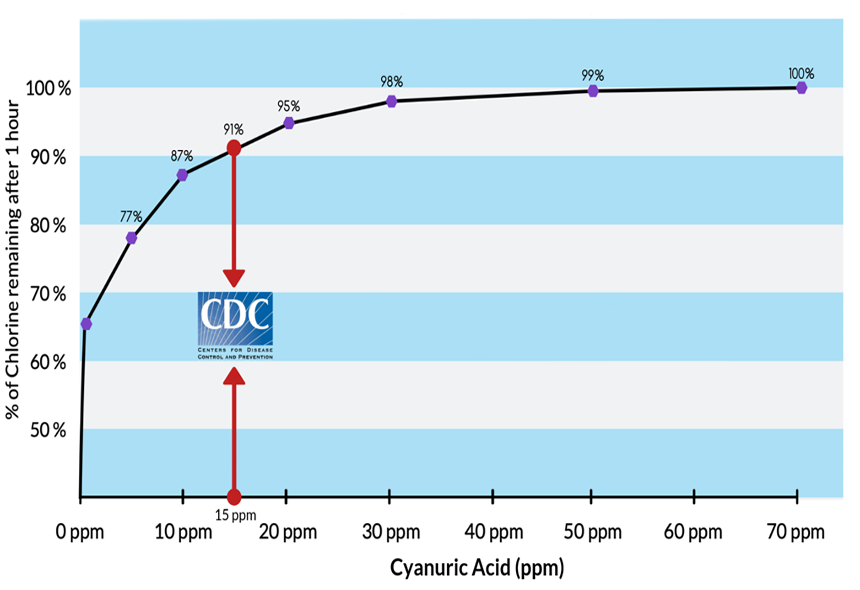
CYA will help prevent the chlorine in your pool from being broken down in the UV rays of the sun. If your pool is indoors but doesn’t experience sunlight exposure, CYA is not needed.
It doesn’t evaporate like the other types of chemicals. When you have too much in your water, it can stop the chlorine from sanitizing your pool. According to the CDC, a public pool should only have CYA levels of 15 PPM.
However, if your pool is indoors but it does get some exposure to UV rays, you may notice that the pool’s chlorine levels are dropping. If this is happening, you may want to maintain low CYA levels.
We hope that you found this to be useful and that you know a little more about CYA and its importance in your pool.
By following the above tips, you can easily lower the cyanuric acid levels in your pool water and enjoy a safer and healthier swimming experience. The most important thing is to test your cyanuric acid levels regularly and take action to adjust them as needed. With proper care, you can keep your pool water healthy and crystal clear all season long.
